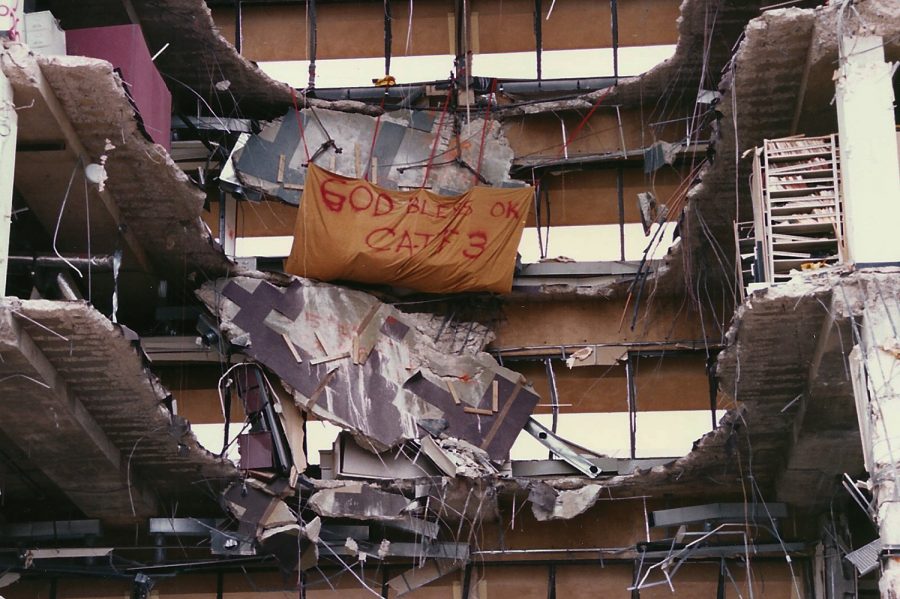The aftermath
April 18, 2020
A banner hangs from what remains of the Alfred P. Murrah Federal Building’s north side in the weeks following a domestic terrorist attack in 1995. In the aftermath of the Oklahoma City bombing, a makeshift memorial was established at the base of the structure.
Crisis-recovery work was all McCarver did for six weeks after the bombing. She worked late every night, and often into the early morning. She did administrative work, and once spent a whole day driving cars out of the Murrah building’s parking garage. She was torn between work — her investigative instincts kicking in — and grief — trying to process the trauma.
Meanwhile, the DEA office in the city expanded and brought in new team members.
“It was never the same,” McCarver said. “It changed on a personal and a professional level. We had been traumatized in a way that they hadn’t … Before the bombing, we were a family. After the bombing, we were an office.”
Don Webb, then the resident agent in charge of the DEA’s Oklahoma City district office — known as “Boss” to McCarver and her coworkers — was at a charity golf tournament when the bomb exploded.
Amid the aftermath, Webb said first responders kept finding their belongings and bringing them to the command post. The flag from the DEA office was found nearly torn to shreds, he said, and is mounted in the Oklahoma City DEA office even today.
The last body was brought out 21 days after the initial explosion, Webb said. There was always something going on around the building, he added. People visited and volunteered by providing their time, food, and donations.
People sent in so many batteries and socks that first responders had to send out a radio message asking for less donations, McCarver said. Elementary schoolers sent letters to those affected.
Kari Watkins, Oklahoma City National Memorial and Museum executive director, was living locally in 1995. When I spoke with her about the aftermath of the bombing, Watkins said she thinks her reaction was the same as every other Oklahoman — she wanted to help the recovery process, so she did.
“Then I went back to school and work, and that was that,” Watkins said. “We just went on when the time was right, and people started moving forward.”
